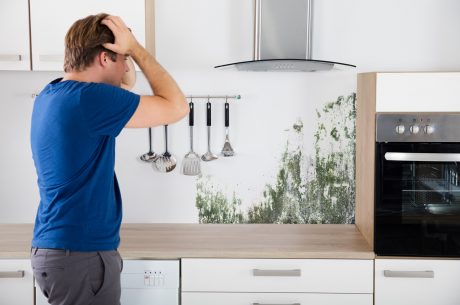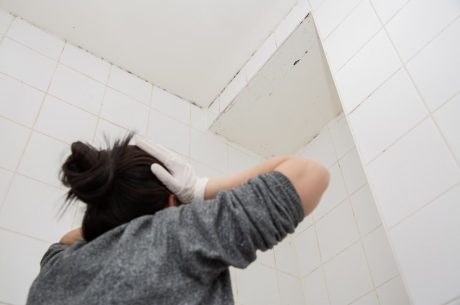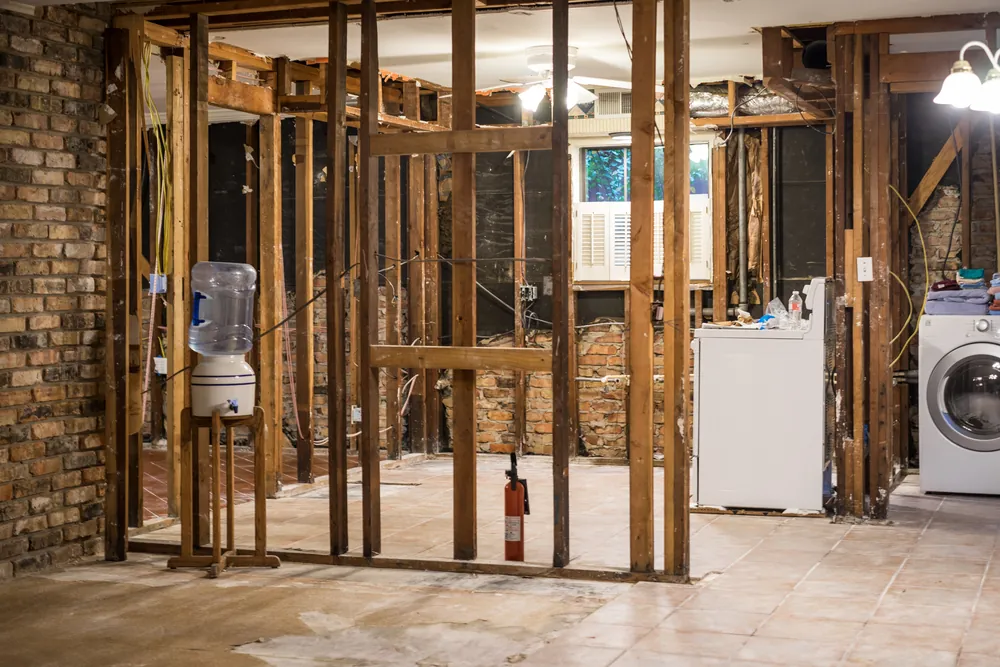Mold growth will manifest as black spots, green streaks, or white discoloration on wood. If you notice any of these patches, it’s important to take action right away. Indoor and outdoor locations can host hundreds of mold species. While many molds are harmless, some might be dangerous for your health, particularly if they are present in your home.
In this article, you will learn how to detect any type of mold on wood, which products are useful for removing mold on wood, and how to remove mold from wood floors and ceilings. Let’s begin!
Identifying Mold on Wood
Mold growth on wood surfaces can be concerning due to its potential health risks and structural implications. Recognizing the signs of mold early is crucial for prompt remediation. In this chapter, we’ll explore how to identify mold on wood surfaces and distinguish it from other types of discoloration or staining.
Common Signs of Mold on Wood
- Discoloration: Mold often appears as patches of green, black, or brown discoloration on wood surfaces. These patches may spread over time if left untreated.
- Musty Odor: Mold growth is often accompanied by a distinctive musty odor. If you notice a persistent musty smell in an area with wooden surfaces, it could indicate mold growth.
- Fuzzy Growth: Mold typically exhibits a fuzzy or velvety texture, especially in areas with high humidity or moisture levels. The presence of fuzzy growth on wood surfaces is a strong indicator of mold infestation.
Tips for Distinguishing Mold from Other Discoloration
- Natural Wood Variations: Keep in mind that not all discoloration on wood surfaces is mold. Natural variations in wood color and grain can sometimes resemble mold patches. Look for uniformity in color and texture to distinguish between natural wood features and mold growth.
- Water Stains vs. Mold: Water stains on wood surfaces can resemble mold growth, but they typically lack the fuzzy texture and musty odor associated with mold. Water stains often appear as light brown or yellowish discoloration and may be confined to specific areas affected by water damage.
Additional Considerations
- Location: Mold is commonly found in areas with high humidity or moisture, such as basements, bathrooms, and areas prone to water leaks. Pay close attention to these areas when inspecting for mold on wood surfaces.
- Health Effects: Keep in mind that prolonged exposure to mold can lead to respiratory issues, allergies, and other health problems. If you suspect mold growth in your home, take appropriate precautions to protect your health during inspection and remediation.

Products That Are Useful to Remove Mold From Wood
Household remedies that clean mold are not too difficult to come by. To kill mold, you can use non-toxic, natural options or hazardous chemicals, so be prepared with protective gear like rubber gloves, safety goggles, and a protective mask.
Determining the best treatment for various materials can depend on whether the wood has been painted or stained and if it’s porous or non-porous. Mold grows on the surface of some types of non-porous wood, but not on other types of wood. The difference is that mold can’t grow on porous woods because the roots are within them.
Borax can only be used on treated non-porous wood. It eliminates mold and prevents new growth, but it must be mixed with warm water in a spray bottle, which may damage porous wood and make the problem worse. Strangely enough, vodka is an excellent mold killer on painted or stained wood, and it also disinfects the wooden surface.
On almost all wood surfaces, distilled white vinegar is a very efficient method to kill mold effectively. It will go through the wood and kill the fungus at its source. Painted or stained wood can be cleaned with a cleaning solution of warm water and dishwashing detergent or laundry detergent.
Finally, hydrogen peroxide is a potent mold killer. It has antifungal, antiviral, and antibacterial properties, making it very effective at eliminating mold on porous surfaces like wood.
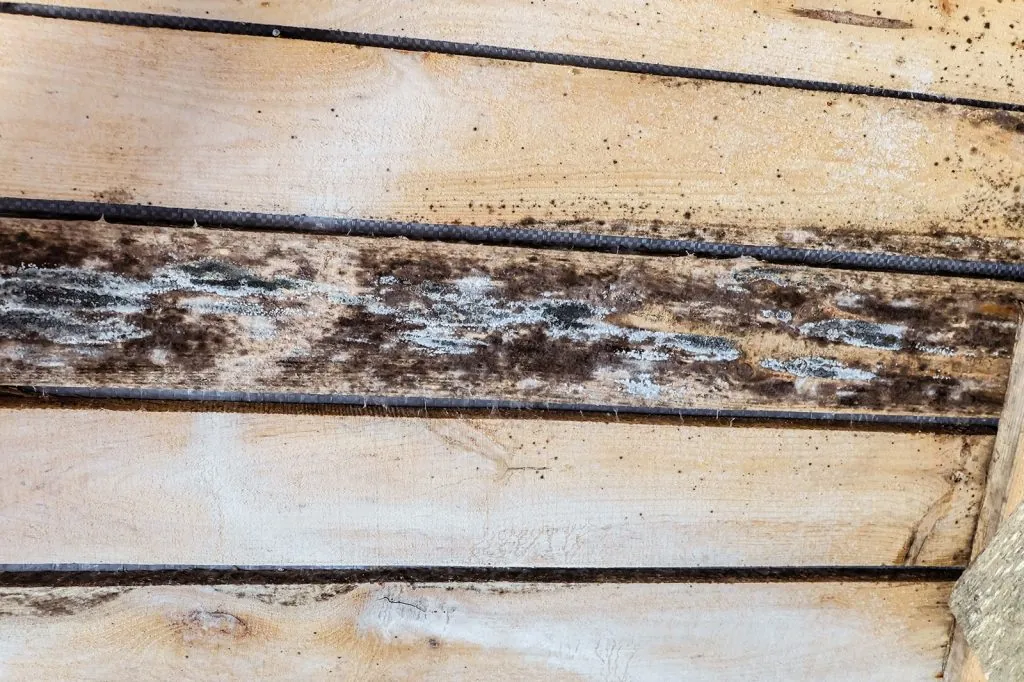
How to Remove Mold From Wood Furniture and Other Surfaces
For minor infestations, a solution of household detergent and water with a soft-bristled brush or sponge may be enough to remove mold from the wood in your house. In more difficult situations, meticulous sanding or even replacement may be required. Keep in mind that even invisible mold spores can cause health problems, so only specialists with appropriate training and removal procedures should handle severe cases.
Gently scrub off the mold from the afflicted wood surfaces with the brush or sponge dipped in the mixture. After you’ve gotten rid of all visible signs of mold, you may be tempted to give the wood one last rinse. Don’t do this. Adding more water to the area might actually produce new mold, defeating your efforts. The objective is to thoroughly dry out as quickly as possible and minimize the chance that it will support mold development.
We strongly advise against the use of bleach. Mold may grow in any nook and cranny on porous surfaces such as drywall or wood, making it difficult to remove all of the spores from inaccessible locations. After you’ve finished cleaning, the mold will just re-grow from within these tiny crevices.
If mold stains have remained after cleaning away the mold from wood, you’ll need to sand them away. The finest sandpaper available is essential for removing any markings that remain. Small quantity packs of various grit are sold at some hardware shops. Wear protective gear when sanding as mold spores may be released as a result and can cause illness. N95 face masks with adjustable straps are affordable and can be found in your local hardware shop.
Another alternative to removing mold from wood is to get the old wood removed and replaced. In some cases, removing and replacing wood may take less time and work than cleaning large or difficult surfaces.
Once you’ve removed the mold from your wooden furniture and surfaces, use a HEPA vacuum cleaner to trap mold spores from the air. Most shop vacs do not have a filter capable of trapping mold spores. Some household vacuums, such as those from Dyson, have built-in HEPA filtering but use caution when emptying the debris into the trash.
Got mold growth on textiles, too? Here’s our guide to removing mold from clothes.
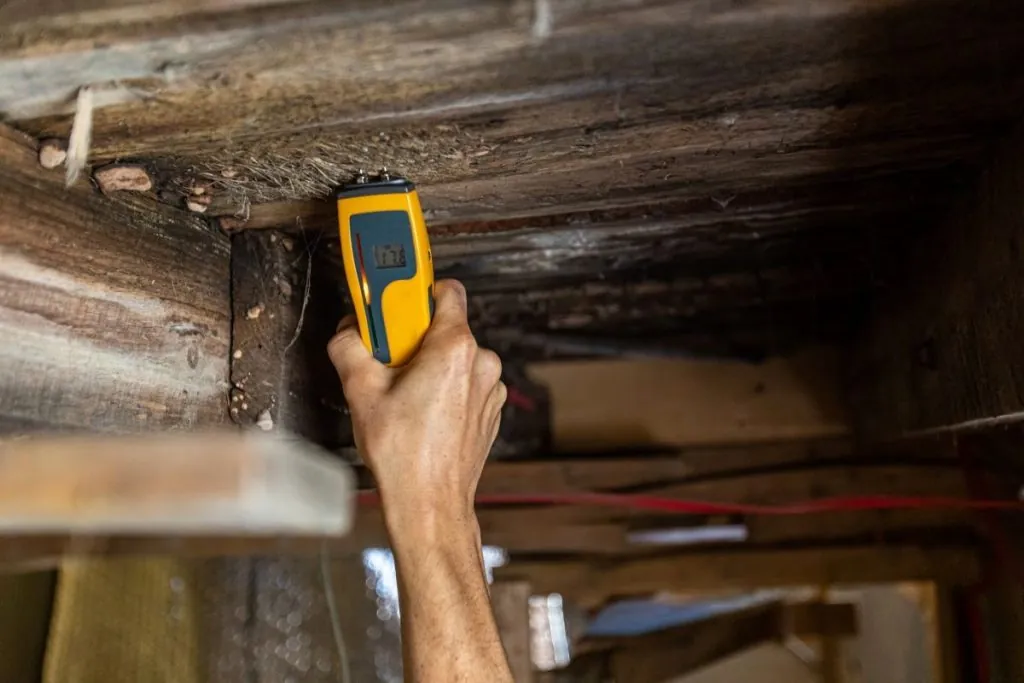
Removing Mold on Wood Floors and Ceilings
If you have surface mold on your wood floor or ceiling, the first thing you must do is locate its source and correct it. You’ll also then need to remove any furnishings from the area. This allows visual inspection to identify the entire affected area.
Next, use a spray bottle filled half with vinegar, and half with dishwashing soap and water. Spray the afflicted area and allow it to sit for 10 minutes before wiping away the mold.
After the mold has been removed, use a clean, wet cloth to wipe away any remaining cleaning solution. Once the floor is completely dry, you can resume using the space. However, we recommend checking the area every few weeks to ensure that mold hasn’t returned.
You can try using hydrogen peroxide or a powerful professional chemical cleaning solution if the mold has spread. Apply the remedy to the afflicted wood and let it soak in for a few minutes before brushing away the mold with a stiff-bristled brush.
Contact the Mold Remediation Professionals at PuroClean
Preventing mold spores is always better than a cure when it comes to mold problems. The best way to prevent mold growth in your home is to maintain a low indoor humidity level and address any water leaks right away, no matter how small they seem.
If you’re not sure how to go forward, especially if the infestation is larger than ten square feet in size, get assistance from a professional mold removal firm. They can help you assess whether cleaning out the mold is feasible or if replacing it is more appropriate. They may also give suggestions for cleaning techniques, or they may need to perform the cleanup using professional-grade products and methods.
Proper maintenance and care of your property could prevent future mold growth in your house while also avoiding allergy symptoms due to spores. Please contact your local PuroClean office to remove mold from wood surfaces on your property professionally. Check out our office locator to get connected today!

